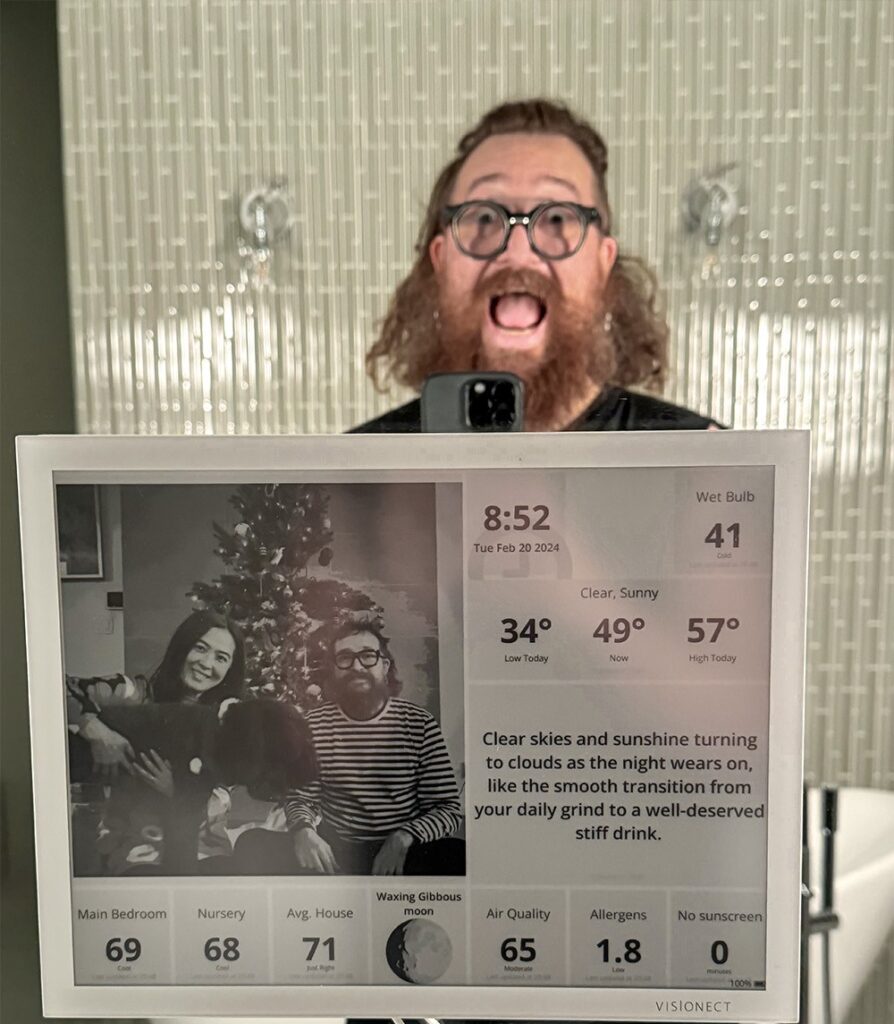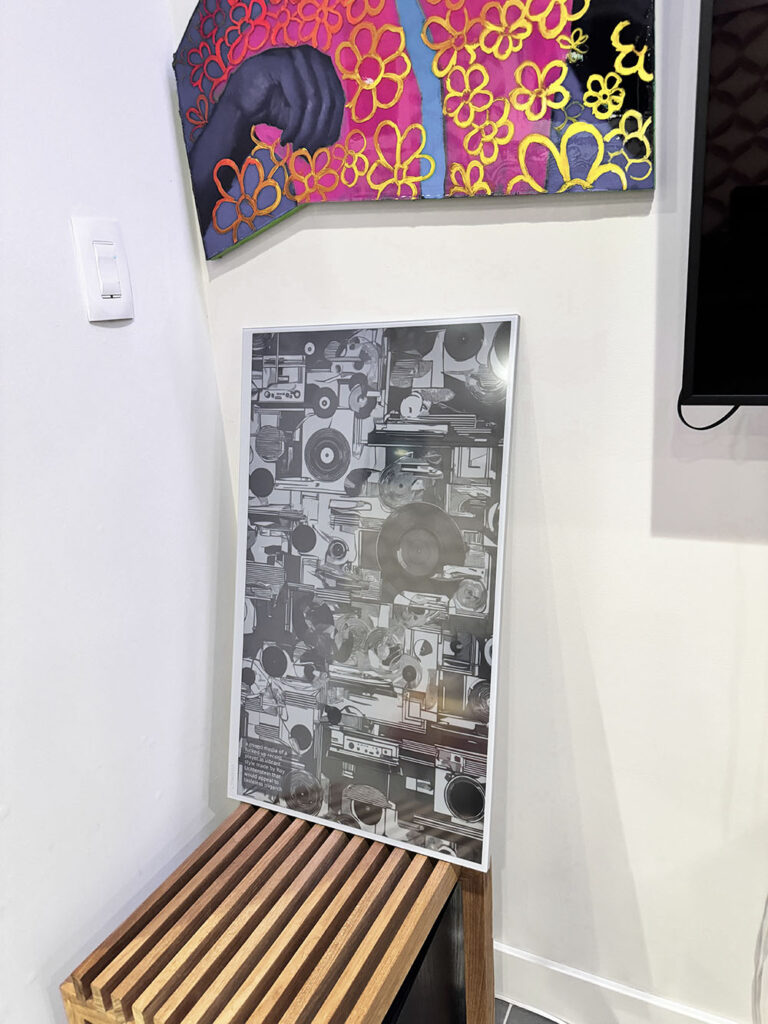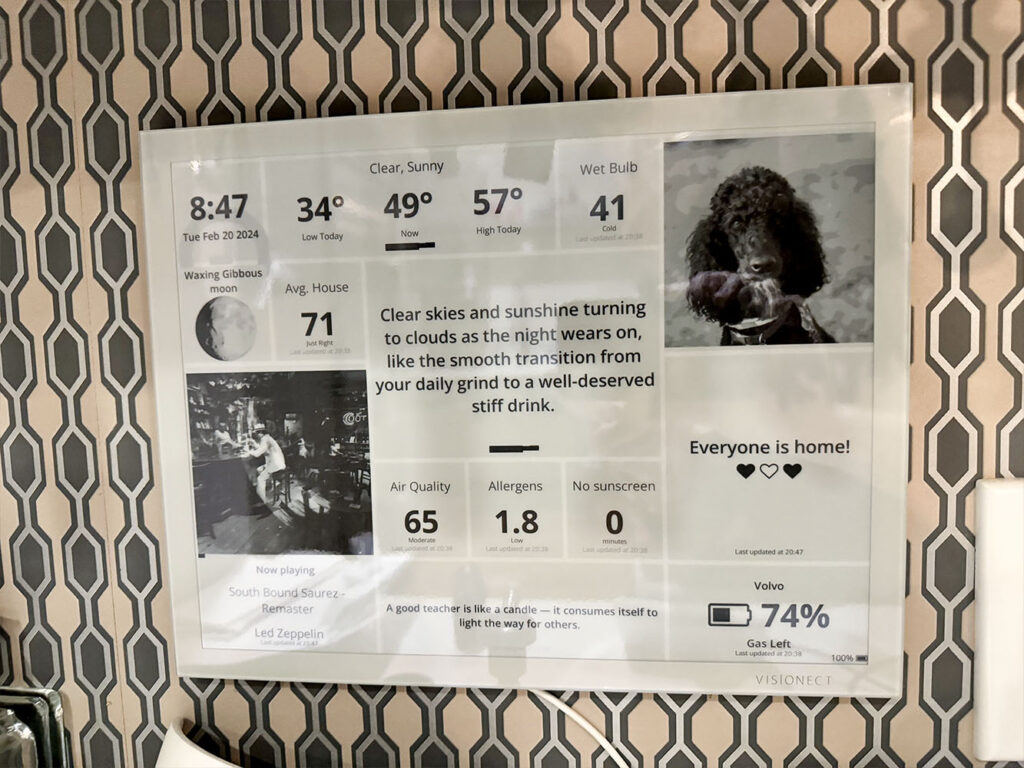

The Future is Ambient: Harper Reed’s Vision for ePaper in Everyday Life
Visionect, 27 Feb 2024
Harper Reed, a tech visionary and entrepreneur known for his innovative approach to technology, has been Visionect’s customer for years. With a career that spans various roles, including Chief Technology Officer for Barack Obama’s 2012 re-election campaign and a former head of commerce at Braintree, he has been at the forefront of merging technology with practical applications in politics, art, and consumer products.
Harper inspires us with his vision. When our team got a chance to sit down and catch up with him, we were on a clear mission – explore Harper’’s journey, his passion for ePaper devices, and how he uses Visionect devices in his everyday life.
Discreet Technology: The Future
Harper has long been an advocate for integrating tech into our daily lives in a way that improves rather than distracts. He had an early career fascination with devices that could communicate essential information—like the weather—through simple color changes, allowing him to prepare for his day without being glued to a screen.
“It was this idea of it being in the background, of being ambient,” Harper explains, highlighting the appeal of technology that informs discreetly, such as ePaper displays.
Harper’s interest in ambient technology reflects his broader philosophy that our interactions with tech should be intuitive and non-intrusive. He contrasts this with the current state of tech, where smartphones demand our constant attention.
“Everyone is looking at their phone… you pull out your phone, a giant device with a hundred percent of the internet on it,” he explains, capturing the technology’s omnipresence.
On the other hand, ePaper technology, with its gentle, non-emitting light, paints Harper’s vision for the future of digital displays. He appreciates how ePaper allows for information to be accessed “in a really nice and calm sort of way,” without the glare or distraction of traditional screens.
This approach to technology, where devices blend into our environment and provide information as needed without demanding focus, is something he believes is crucial for reducing the strain on our eyes and minds.
“It’s not grabbing your eye, stealing focus. It’s not demanding attention. It gets it when it needs it,” Harper says, advocating for a more balanced, ambient interaction with our tech achieved with ePaper devices.


Visionect: Simplicity for Every User
Harper’s discovery of Visonect products around 2017 significantly impacted his approach and tinkering with ePaper displays.
Visionect devices allowed him to build ePaper solutions without wasting time on the nitty-gritty of building hardware, software and apps. “I have always been looking for e-ink screens that are easy to use,” he shares, highlighting his desire for accessible technology that’s not complex to manage.
The appeal of Visionect devices extends beyond the hardware. He highlights the simplicity and effectiveness of its software, which allows him to manage various displays around his home efficiently.
This ease of use contrasts sharply with common misconceptions about e-paper technology.
Harper points out, “People misunderstand how ePaper displays work,” emphasizing the challenge of rendering information to these screens compared to traditional monitors. That’s why it’s crucial to have companies like Visionect develop consumer-friendly ePaper solutions.
Inside Harper’s ePaper World: From Weather Stations to AI Art
When asked about the potential for ePaper devices to go mainstream, Harper highlights the widespread adoption of eReaders. The example of Kindle signifies that the technology is not just a niche interest but has broader applications. “I would say yes that it has…the Kindle is obviously very mainstream. So there is a demand,” he observes, highlighting the visible path toward widespread use.

He envisions ePaper displays as devices that can “blend into your environment,” much like music can be both a focus and a backdrop, depending on the listener’s attention. But Harper’s exploration into ePaper versatility doesn’t stop at eReaders; on many devices placed around his home office, he shows us his digital AI art.
Besides AI art, he also uses Visionect devices as a weather station – “I take the weather and data and I pass it through a language-learning model (in this case OpenAI API) and I have it tell me the weather in a snarky tone. And so it’ll just kind of have this silly statement about the weather “
But the use cases don’t stop there – Harper’s right now exploring how to transform a device into a child-friendly screen showing favorite cartoon characters. And while he shows us his dedicated device for showing the calendar, he mentions having up-to-date newspapers as well.
Harmonizing Technology with Everyday Life
Harper recognizes the challenges of ePaper innovation and its ability to go mainstream due to intellectual property and user-friendliness. Despite these challenges, he remains optimistic, suggesting that its potential lies in making technology more accessible and less intrusive.
Through Harper’s eyes, ePaper technology is not just about the content it displays but how it harmonizes with our living spaces and lives.

